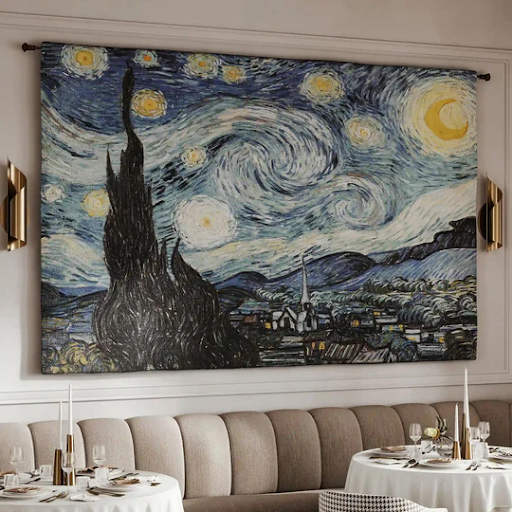Woven wall hanging decor has long served as more than just an aesthetic addition to living spaces. Across cultures, these artistic creations carry stories, traditions, and symbolism that reflect the heritage and values of their creators. Whether displayed in homes, community spaces, or cultural institutions, woven wall hangings offer a unique intersection of craftsmanship, visual storytelling, and cultural identity.
Historical Significance of Woven Art
Woven textiles have been integral to human expression for centuries. Ancient civilizations used weaving not only for practical purposes, such as clothing and shelter, but also to convey social status, religious beliefs, and historical narratives. In many indigenous communities, patterns, colours, and techniques were passed down through generations, each with a distinct meaning. These traditions form the foundation of modern tapestry wall hangings, linking contemporary décor to rich cultural histories.
Techniques and Craftsmanship
The creation of woven wall hangings involves meticulous craftsmanship. Artisans employ various weaving techniques, including hand-knotting, loom weaving, and macramé, to create textured designs that convey depth and meaning. Materials such as wool, cotton, silk, or synthetic fibres are chosen based on durability, texture, and aesthetic appeal. Each piece, from intricate geometric patterns to natural motifs, demonstrates a combination of skill and creativity that elevates a functional object into a work of art.
Symbolism in Design
Woven wall hangings often carry symbolic significance. Cultural motifs, spiritual icons, and abstract designs can communicate identity, beliefs, and values. For instance, a tree of life tapestry is a popular design that symbolizes growth, interconnectedness, and the continuity of life. Similarly, other motifs might represent ancestral stories, local flora and fauna, or historical events. Displaying these pieces allows individuals to celebrate their heritage while sharing meaningful narratives with others.
Modern Applications in Home Décor
Beyond cultural expression, woven wall hangings have become popular in modern interior design. They provide texture, colour, and focal points in living spaces. Wall tapestry hanging can complement various décor styles, from minimalist and bohemian to traditional and eclectic. By integrating these pieces into homes, individuals not only enhance aesthetics but also honor artisanal craftsmanship and cultural storytelling.
Supporting Artisan Communities
Purchasing woven wall hanging decor often supports local and international artisan communities. Many contemporary weavers continue traditional practices, providing them with economic opportunities while preserving cultural heritage. By investing in authentic pieces, consumers help sustain these crafts, enabling artisans to maintain and innovate their weaving techniques while keeping cultural traditions alive.
Emotional and Psychological Impact
Woven wall hangings can also have a profound emotional impact. The textures, patterns, and colours can evoke feelings of warmth, nostalgia, or inspiration. For many, displaying culturally significant woven art strengthens a sense of identity and connection to roots. The presence of meaningful textiles in daily environments creates not just visual appeal but also a comforting and reflective atmosphere.
Versatility and Customisation
One of the appeals of woven wall hanging decor is its versatility. Artisans can tailor designs to suit individual tastes, spaces, or thematic concepts. Customisable tapestry wall hangings allow collectors to select pieces that align with personal or cultural narratives. This adaptability ensures that woven textiles remain relevant across different living environments while preserving their traditional essence.
Preserving Cultural Heritage
Woven wall hangings are crucial for preserving cultural heritage. Museums, galleries, and private collectors showcase these works to educate audiences about traditional techniques and the stories they convey. By displaying these textiles, societies maintain a tangible connection to their past, fostering appreciation for the skills and symbolism embedded in each piece.
Conclusion
Woven wall hanging decor serves as a bridge between art, culture, and personal expression. Through techniques that reflect centuries of tradition, symbolic designs such as the tree of life tapestry, and contemporary applications in home décor, these textiles preserve heritage while enriching modern spaces. Incorporating tapestry wall hangings into homes or public spaces allows for both aesthetic enjoyment and meaningful engagement with cultural narratives.

